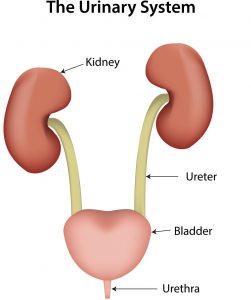The term “bladder surgery” is one which many people edge away from. It can be invasive and extreme. However, when desperately needed, it can make a life-changing difference.
Harvey Winkler, MD, co-chief of urogynaecology and director of female pelvic medicine asserts “everyone needs to make their own decision about surgery.” He explains that surgery is the best approach “if you’re looking for the one-shot deal that’s going to give you the best dryness option.”
Stress incontinence is the unintentional loss of urine during physical movement or activity. This condition is due to having weak pelvic floor muscles, which causes you to leak when stress is placed on the bladder. Often, childbirth is the most common cause of stress incontinence in women, with prostate surgery being the most common cause in men.

Who is Surgery Suitable For?
Surgery should ideally be seen as a last resort when other treatment methods do not work. Urologists and Doctors will recommend that you try less invasive methods first, such as pelvic floor exercises and bladder training.
What are your Options for Surgery?
The common options of surgery for stress incontinence are the following:
Sling Procedure
The aim of sling procedures is to support the neck of the bladder to support it. An incision is made in your lower abdomen and vagina in order to make a sling.
Slings are often made of one of the following:
- tissue donated from another person
- a synthetic material
- tissue taken from an animal
- tissue taken from another part of your body
Often, a sling is made using part of the layer of tissue that covers the abdominal muscles. Many people prefer these slings as there is more education about their long-term safety and effectiveness.
The Success Rate:
Studies have shown this method has an 88 to 95 percent rate in correcting incontinence. However, a commonly reported problem associated with the use of slings is difficulty emptying the bladder fully when visiting the toilet. A small portion of people who have the procedure also find they develop urge incontinence afterwards.
Many people can be put off due to the nature of this method, however, a sling procedure can be life-changing. 42-year-old Debbie is an example of an individual whose quality of life has been improved by the surgery. Debbie had been living with stress incontinence for years. She explains, “I have four kids and I was just at the point where I couldn’t laugh without leaking”. After talking with friends about their experience, she opted for the sling procedure. Debbie explains, “it’s just a quick, easy, in-and-out procedure. It was literally, a life-changer”.

Colposuspension
Colposuspension is a major operation that requires a general anaesthetic. It is therefore important to research the operation and consider other options before choosing this method. During this procedure, an incision is made in your lower abdomen, lifting up the neck of your bladder. It is then stitched in this lifted position. This method improves pressure transmission and compression of the neck of the bladder.
The two types of colposuspension are the following:
- laparoscopic (keyhole) colposuspension– in this method, surgery is carried out through more small incisions using special small surgical instruments. This procedure involves making a smaller cut. However, after this operation, most people recover more quickly than with open colposuspension.
- open colposuspension– this is where surgery is carried out through a large incision. This method provides great long-term success rates, however involves making a large cut in the abdomen. This means post-operative healing times are longer.
The Success Rate:
Colposuspension has a success rate of between 50% and 70%.
Although effective, there are problems that can arise after colposuspension. Studies have shown that these include the following:
– difficulty emptying the bladder fully when going to the toilet
– recurrent urinary tract infections (UTIs)
– discomfort during sex
Tape procedure
Tape procedures aim to reduce the leaking of urine associated with stress incontinence through holding the urethra up in the correct position. During a tape procedure, a plastic tape is inserted through a cut inside the vagina and threaded behind the urethra. The middle part of the tape supports the urethra. The two ends are then threaded through incisions in either the tops of the inner thigh or the abdomen.
The Success Rate:
Experts estimate that 2 in every 3 people experience no problems after the surgery. Those who still have occasional leakages after this surgery find their incontinence is less severe than it was before the operation.
It is not rare however for women to need to go to the toilet more frequently and urgently after this procedure. A temporary side effect is not being able to completely empty the bladder when you go to the toilet. On rare occasions, the tape can wear away or move over time and further surgery may be needed at a later stage to adjust it. Occasionally, individuals need surgery to make it looser.
Urethral Bulking Agents
Urethral bulking agents aim to increase the size of the urethral walls, allowing the urethra to stay closed with more force. A bulking agent is a substance that can be injected into the walls of the urethra. This is injected through a cystoscope inserted directly into the urethra. This method does not require any incisions and is, therefore, less invasive than most methods of treatment.

The location of the urethra
The Success Rate:
Whilst this is less invasive than other methods, it is generally less effective than the other options available. Although there are success stories with this, fewer than 4 out of 10 women have long-term benefits.The effectiveness of this method can also reduce with time and you may need repeated injections. It is also common to experience a burning sensation or temporary bleeding when you pass urine for a short period after this procedure.
It is important to not be scared of talking to a Doctor about the option surgery, as it can be invaluable. Stress incontinence is fortunately often very treatable, and you should not let it get in the way of your everyday life.

Originally posted 2018-03-23 09:43:43.












After years of living with stress incontinence now interfering with quality of life i am in line for a surgical sling procedure what new alternatives are there